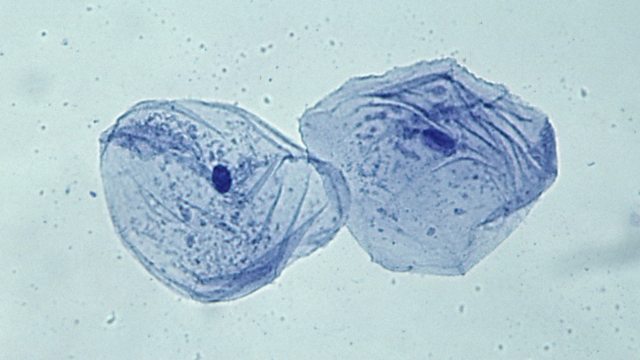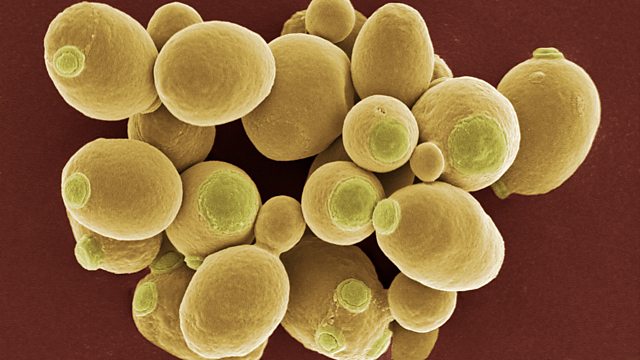Life processes

Living organisms can reproduce
Living organisms have certain life processes in common. There are seven things that they need to do to count as being alive. The phrase MRS GREN is one way to remember them:
- Movement - all living things move, even plants
- Respiration - getting energy from food
- Sensitivity - detecting changes in the surroundings
- Growth - all living things grow
- Reproduction - making more living things of the same type
- Excretion - getting rid of waste
- Nutrition - taking in and using food
It can be easy to tell if something is living or not. A teddy bear might look like a bear, but it cannot do any of the seven things it needs to be able to do to count as being alive.
A car can move, it gets energy from petrol (like nutrition and respiration), it might have a car alarm (sensitivity), and it gets rid of waste gases through its exhaust pipe (excretion). But it cannot grow or make baby cars. So a car is not alive.
Cells
Cells are the basic building blocks of all animals and plants. They are so small, you need to use a light microscope to see them.
The light microscope

A modern microscope with two eyepiece lenses
A light microscope uses a series of lenses to produce a magnified image of an object:
- the object is placed on a rectangular glass slide
- the slide is placed on a stage with a light source below
- light shines through the object and into the objective lens
- the light passes through the eyepiece lens and from there into your eye
You can focus the image using one or more focusing knobs. It is safest to focus by using the knobs to move the stage downwards, rather than upwards. There is a chance of the objective lens and slide colliding if you focus upwards.
Microscopes often have three or four objective lenses on a turret that you can turn. It is wise to observe an object using the lowest magnification lens first. You may need to adjust the focus and the amount of light as you move to higher magnifications.

Plant cells seen through a light microscope
Making a slide
Onion cells are easy to see using a light microscope. Here is a typical method for preparing a slide of onion cells:
- cut open an onion
- use forceps to peel a thin layer from the inside
- spread out the layer on a microscope slide
- add a drop of iodine solution to the layer
- carefully place a cover slip over the layer

Stains like iodine make features such as the nucleus easier to see
Observing cells
When you observe cells, it is usual to make a drawing of what you see. Very often there is so much to see that you can only aim to draw part of it:
- use pencil rather than pen or colours
- outline the features as accurately as you can
- use as little shading as possible
- label your drawing with the name of the sample and the total magnification you used

Cheek cells stained with methylene blue
Total magnification
The magnification of each lens is shown next to the lens:
total magnification = eyepiece lens magnification × objective lens magnification
For example, if the eyepiece magnification is ×10 and the objective lens magnification is ×40:
total magnification = 10 x 40 = ×400 (400 times)







Animal cells and plant cells
Animal cells usually have an irregular shape, and plant cells usually have a regular shape. Cells are made up of different parts.
It is easier to describe these parts by using diagrams:
Animal cells and plant cells also contain tiny objects called mitochondria in their cytoplasm
Animal cells and plant cells both contain:
Plant cells also contain these parts, which are not found in animal cells:
The table summarises the functions of these parts:
| Part | Function | Found in |
|---|---|---|
| Cell membrane | Controls the movement of substances into and out of the cell | Plant and animal cells |
| Cytoplasm | Jelly-like substance, where chemical reactions happen | Plant and animal cells |
| Nucleus | Carries genetic information and controls what happens inside the cell | Plant and animal cells |
| Mitochondria | Where most respiration reactions happen | Plant and animal cells |
| Vacuole | Contains a liquid called cell sap, which keeps the cell firm | Plant cells only |
| Cell wall | Made of a tough substance called cellulose, which supports the cell | Plant cells only |
The key features and functions of plant and animal cells
explained
Cells and their functions
Humans are multicellular. That means we are made of lots of cells, not just one cell. The cells in many multicellular animals and plants arespecialised, so that they can share out the processes of life. They work together like a team to support the different processes in an organism.
Specialised cells
The diagrams show examples of some specialised animal cells. Notice that they look very different from one another.
A selection of specialised animal cells
The tables show examples of some specialised animal and plant cells, with their functions and special features:
Unicellular organisms
A unicellular organism is a living thing that is just one cell. There are different types of unicellular organism, including:
- bacteria
- protozoa
- unicellular fungi
You might be tempted to think that these organisms are very simple, but in fact they can be very complex. They have adaptations that make them very well suited for life in their environment.
Bacteria
Bacteria are tiny. A typical bacterial cell is just a few micrometres across (a few thousandths of a millimetre). The structure of a bacterial cell is different to an animal or plant cell. For example, they do not have a nucleus but they may have a flagellum. This is a tail-like part of the cell that can spin, moving the cell along.
The main parts of bacteria
Protozoa
Protozoa are unicellular organisms that live in water or in damp places. The amoeba is an example of one. Although it is just one cell, it has adaptations that let it behave a bit like an animal:
- it produces pseudopodia (“false feet”) that let it move about
- its pseudopodia can surround food and take it inside the cell
- contractile vacuoles appear inside the cell, then merge with the surface to remove waste

A light microscope image of an amoeba, showing several pseudopodia
Yeast
You may be familiar with fungi from seeing mushrooms and toadstools.Yeast are unicellular fungi. They are used by brewers and wine-makers because they convert sugar into alcohol, and by bakers because they can produce carbon dioxide to make bread to rise.
Yeast have a cell wall, like plant cells, but no chloroplasts. This means they have to absorb sugars for their nutrition, rather than being able to make their own food by photosynthesis
Yeast can reproduce by producing a bud. The bud grows until it is large enough to split from the parent cell as a new yeast cell.

Several yeast cells showing buds
Cells, tissues, organs and systems
Multicellular organisms are organised into increasingly complex parts. In order, from least complex to most complex:
- cells
- tissues
- organs
- organ systems
- organism
Tissues
Animal cells and plant cells can form tissues, such as muscle tissue in animals. A living tissue is made from a group of cells with a similar structure and function, which all work together to do a particular job. Here are some examples of tissues:
- muscle
- the lining of the intestine
- the lining of the lungs
- xylem (tubes that carry water in a plant)
Organs
An organ is made from a group of different tissues, which all work together to do a particular job. Here are some examples of organs:
- heart
- lung
- stomach
- brain
- leaf
- root
Organ systems
An organ system is made from a group of different organs, which all work together to do a particular job. Here are some examples of organ systems:
- circulatory system
- respiratory system
- digestive system
- nervous system
- reproductive system
Cells are organised into tissues, organs, systems and organisms